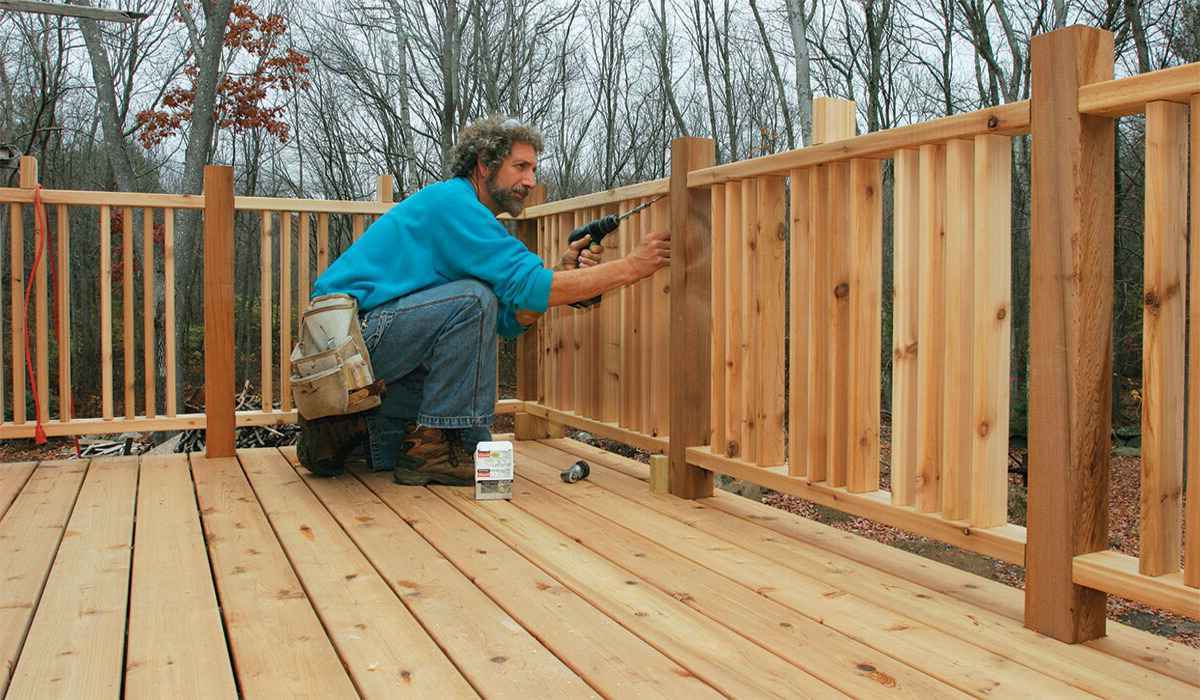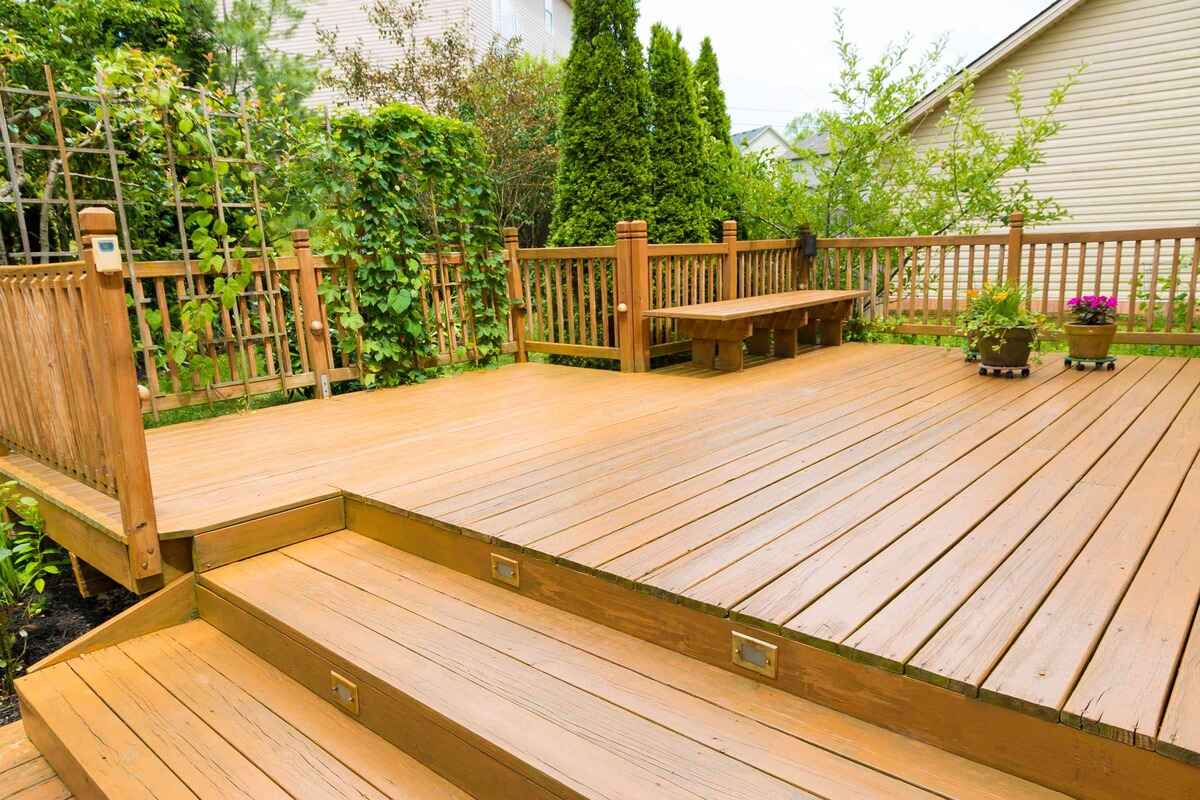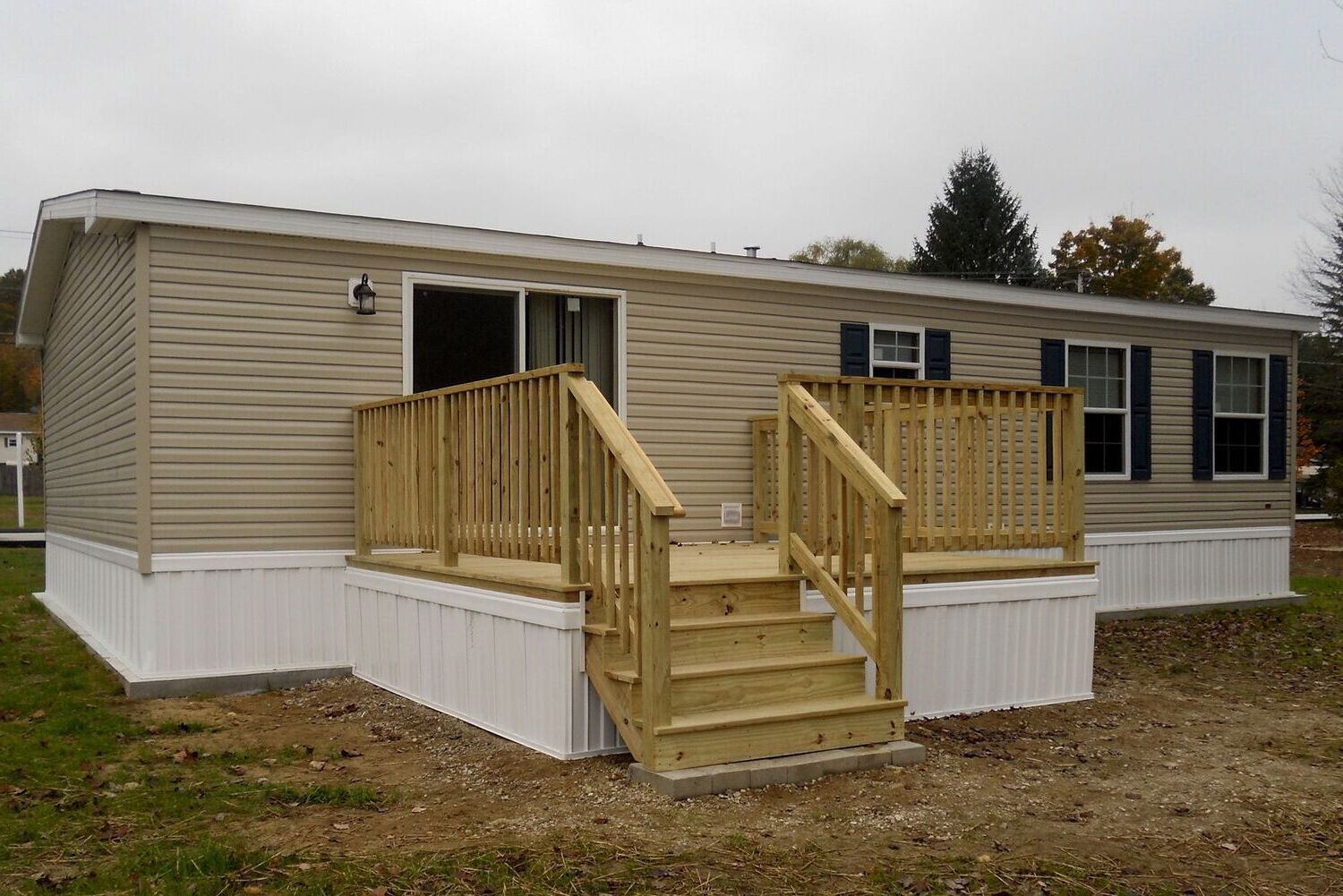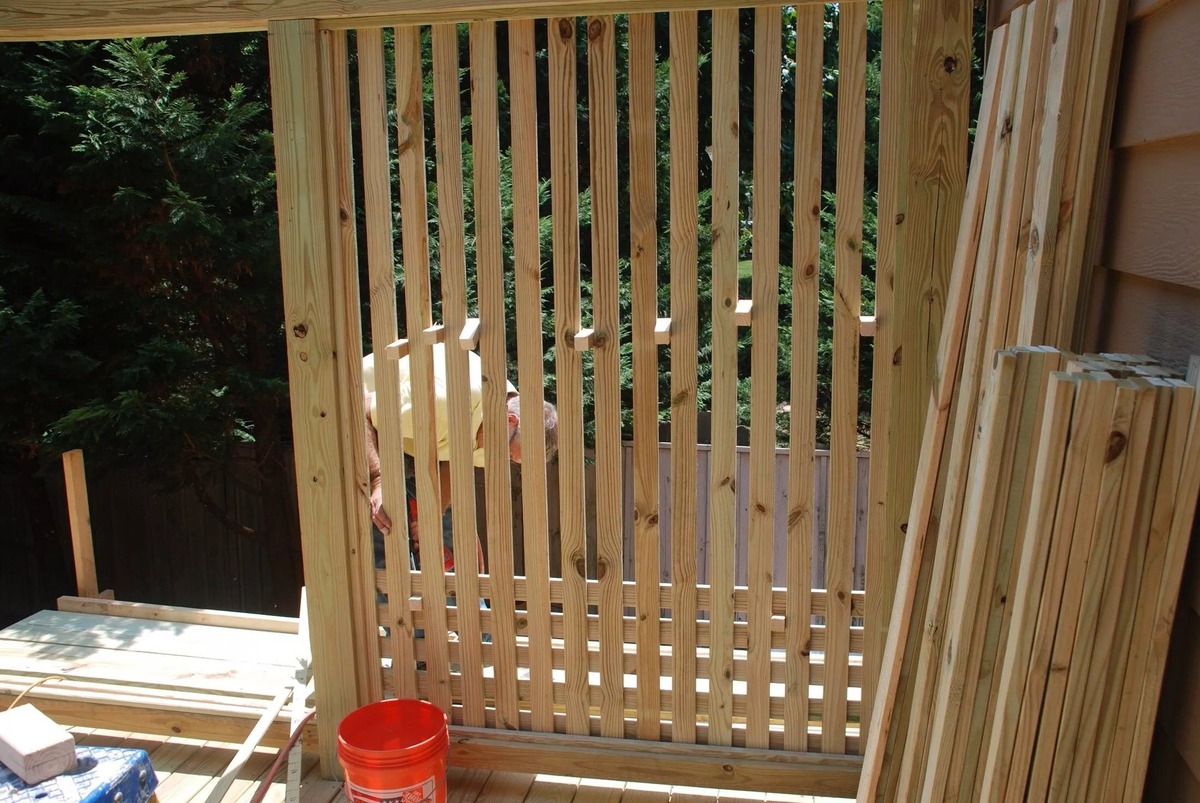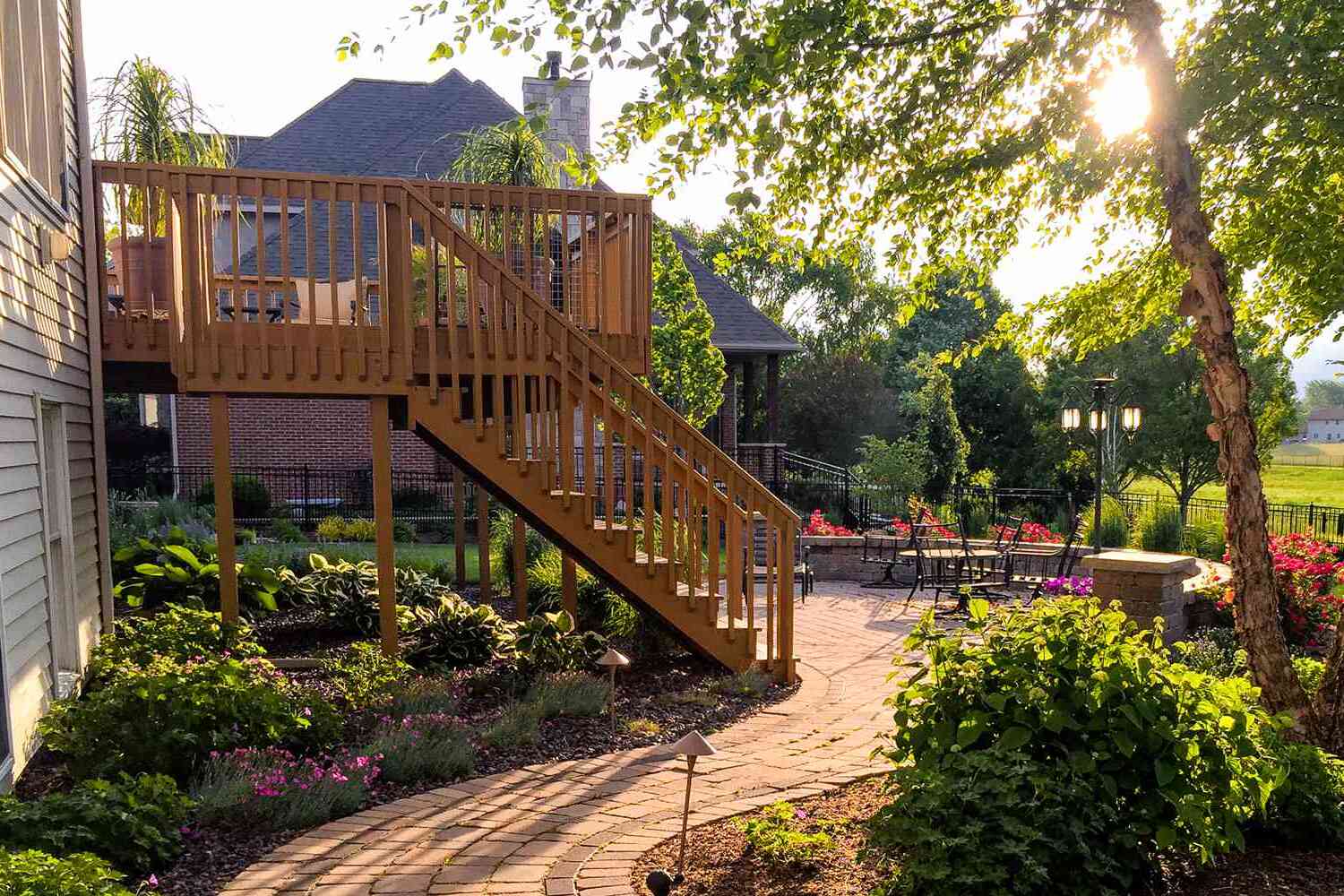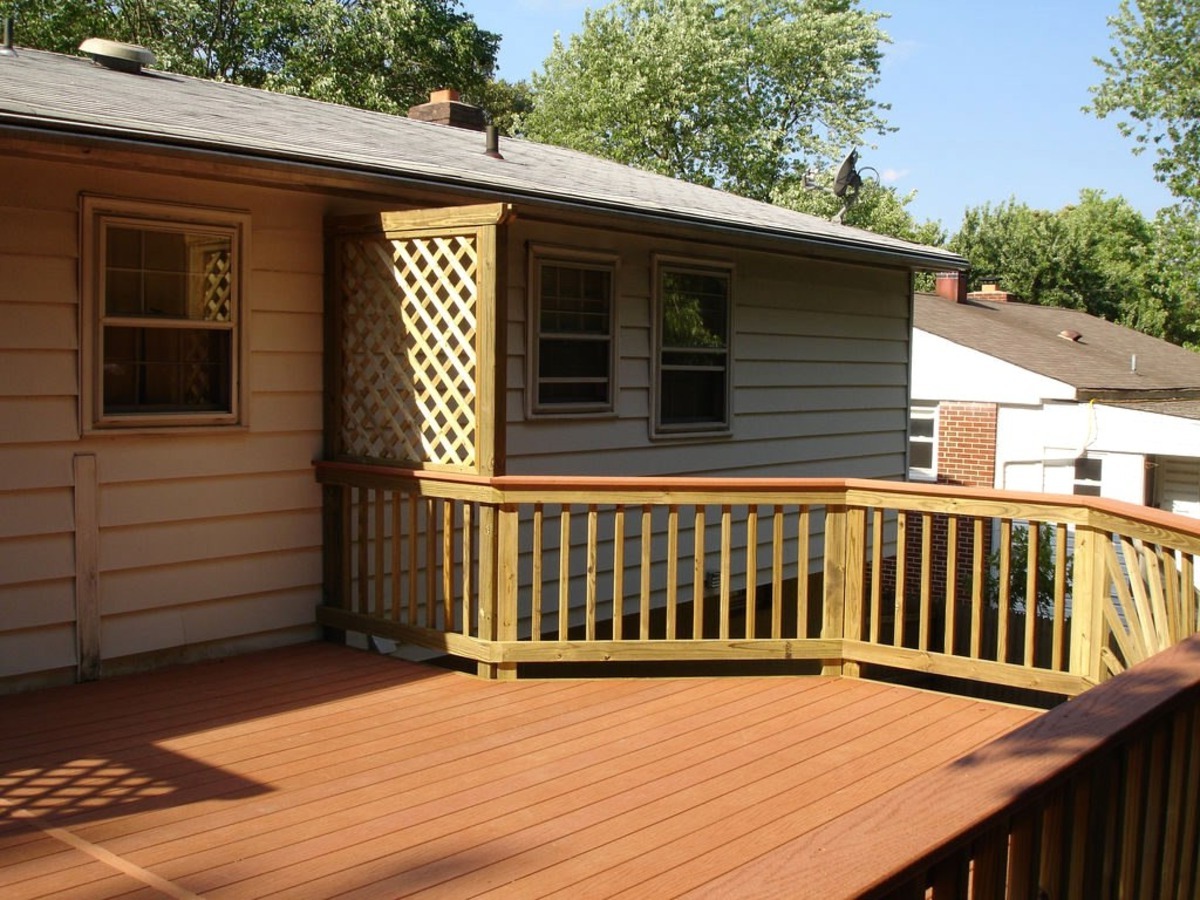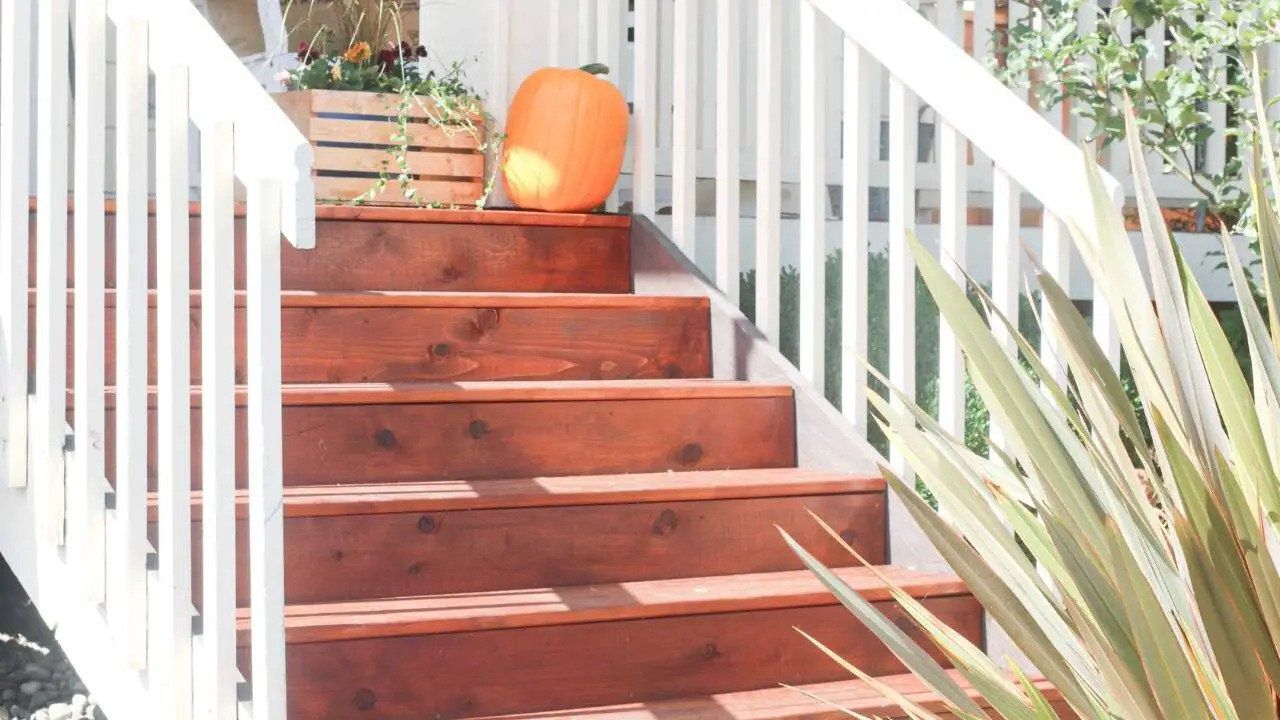Home>Create & Decorate>DIY & Crafts>Tree Deck Building: How To Build A Deck Around A Tree
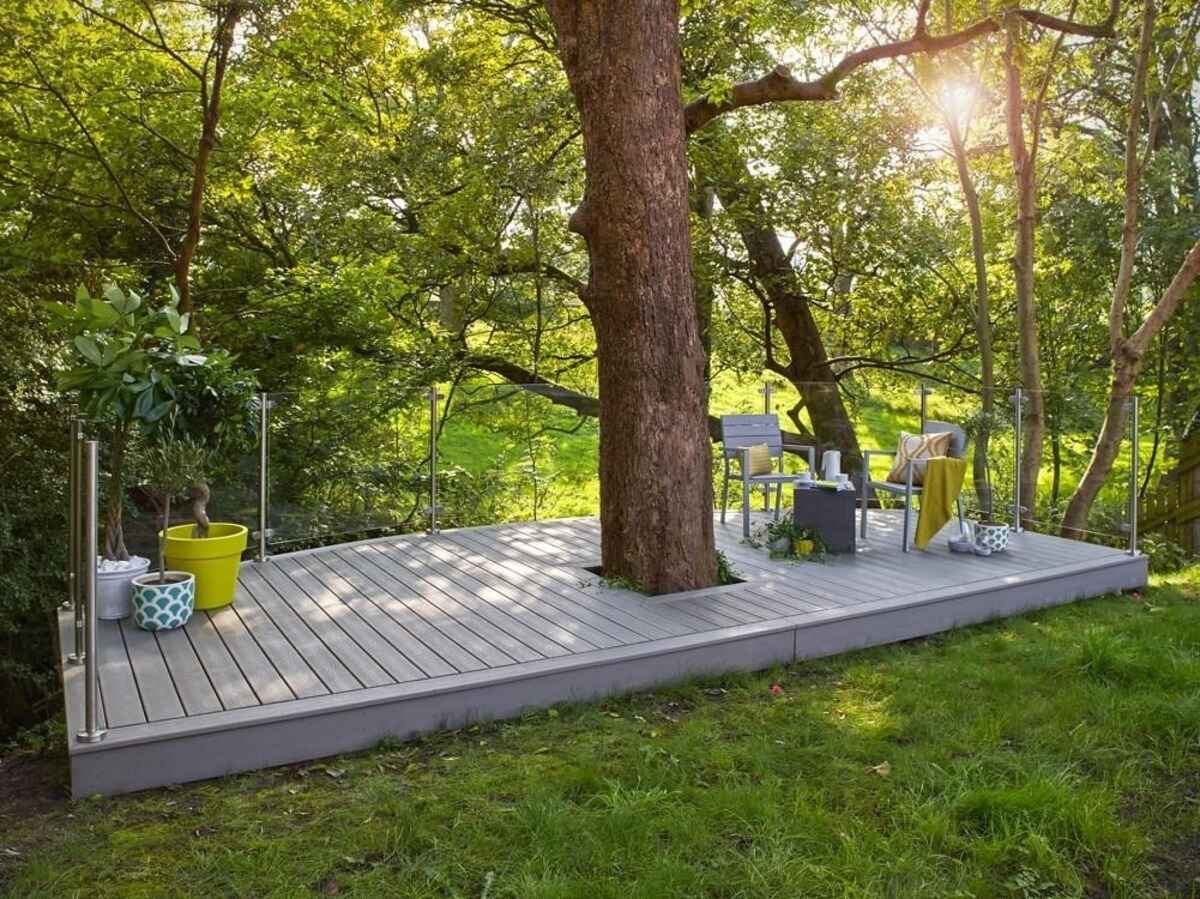

DIY & Crafts
Tree Deck Building: How To Build A Deck Around A Tree
Published: February 29, 2024

Senior Editor in Create & Decorate, Kathryn combines traditional craftsmanship with contemporary trends. Her background in textile design and commitment to sustainable crafts inspire both content and community.
Learn how to build a beautiful and functional deck around a tree with our DIY & Crafts guide. Enhance your outdoor space with our expert tips and ideas.
(Many of the links in this article redirect to a specific reviewed product. Your purchase of these products through affiliate links helps to generate commission for Twigandthistle.com, at no extra cost. Learn more)
Introduction
Building a deck around a tree can add a touch of natural beauty and charm to your outdoor living space. It allows you to seamlessly incorporate the tree into the design, creating a unique and visually stunning feature that blends the man-made structure with the beauty of nature. Whether you have a majestic oak, a graceful maple, or a sturdy pine, constructing a deck around a tree requires careful planning, precise execution, and a deep respect for the tree's well-being.
In this comprehensive guide, we will walk you through the step-by-step process of building a deck around a tree. From assessing the tree's health and structural integrity to designing a deck that complements its natural surroundings, we will cover everything you need to know to undertake this rewarding DIY project. By the end of this guide, you will have the knowledge and confidence to embark on this endeavor, creating a stunning and functional outdoor space that celebrates the beauty of the tree while providing a relaxing and inviting area for leisure and entertainment.
So, grab your tools, unleash your creativity, and get ready to embark on a journey that combines craftsmanship with nature's splendor. Let's dive into the intricacies of tree deck building and unlock the secrets to seamlessly integrating a tree into your outdoor living space.
Read more: How To Build A Hall Tree
Step 1: Assessing the Tree
Before embarking on the construction of a deck around a tree, it is crucial to conduct a thorough assessment of the tree's health, structure, and overall well-being. This initial step is essential to ensure that the tree will not only remain unharmed during the construction process but also thrive in the long run as an integral part of the deck. Here's a detailed breakdown of the key aspects to consider when assessing the tree:
-
Health Evaluation: Begin by examining the overall health of the tree. Look for signs of disease, decay, or pest infestation. Check for any dead or decaying branches, abnormal growths, or discoloration of leaves. If you notice any concerning symptoms, it's advisable to consult with an arborist to assess the tree's condition accurately.
-
Root System Inspection: Assess the tree's root system to determine its extent and distribution. Carefully examine the area where the deck will be constructed to identify the location of major roots. Avoid damaging or severing large roots, as this can compromise the tree's stability and nutrient uptake.
-
Tree Species Consideration: Different tree species have varying sensitivities to construction activities. Some trees, such as oaks, maples, and pines, are more resilient, while others may be more susceptible to damage. Research the specific characteristics and requirements of the tree species to understand how it may respond to the construction process.
-
Structural Integrity: Evaluate the structural integrity of the tree, particularly if it's a mature and sizable specimen. Look for any signs of weakness, such as cracks, splits, or hollow areas in the trunk. A structurally compromised tree may not be suitable for supporting a deck, and it's essential to prioritize the safety of both the tree and the individuals who will use the deck.
-
Environmental Impact: Consider the environmental impact of building a deck around the tree. Assess how the construction process and the presence of the deck may affect the tree's surrounding ecosystem, including soil compaction, water drainage, and sunlight exposure.
By meticulously assessing these critical factors, you can make informed decisions regarding the feasibility of building a deck around the tree and implement measures to safeguard the tree's well-being throughout the construction process. This thoughtful approach sets the stage for a harmonious integration of the tree and the deck, ensuring a sustainable and visually captivating outdoor space.
Step 2: Designing the Deck
Designing a deck around a tree is a creative endeavor that requires careful consideration of both aesthetic and practical elements. The goal is to seamlessly integrate the deck with the natural surroundings while ensuring the tree remains the focal point of the outdoor space. Here's a detailed exploration of the key aspects involved in designing a deck around a tree:
Embracing the Tree's Form and Growth
The design process begins with a deep appreciation for the tree's form and growth patterns. Take into account the tree's canopy spread, trunk diameter, and the natural shape of its branches. These characteristics will influence the layout and shape of the deck, guiding the placement of support posts and the overall footprint of the structure. By embracing the tree's unique form, you can create a design that accentuates its beauty and allows the deck to coexist harmoniously with the tree.
Selecting Suitable Materials
Choosing the right materials is essential for a tree-integrated deck. Opt for durable, weather-resistant materials that complement the natural aesthetics of the tree. Wood, particularly cedar or redwood, is a popular choice for its natural beauty and ability to blend seamlessly with the outdoor environment. Additionally, consider using composite decking materials, which offer low maintenance and long-term durability while mimicking the appearance of natural wood. The selected materials should not only enhance the visual appeal of the deck but also withstand the environmental conditions and potential interactions with the tree.
Read more: How To Build A Log Cabin From Trees
Incorporating Tree-Friendly Features
Integrating tree-friendly features into the deck design is crucial for preserving the tree's health and vitality. This may include creating gaps or openings in the deck surface to allow for natural water and air circulation around the base of the tree. Additionally, incorporating a flexible construction approach that accommodates the tree's growth over time is essential. By designing the deck with adjustable elements and avoiding rigid attachments to the tree, you can minimize the risk of constraining the tree's natural expansion and movement.
Enhancing Visual Harmony
The design should aim to enhance the visual harmony between the deck and the tree. Consider incorporating curved or organic shapes in the deck layout to mirror the tree's natural contours. This can create a sense of fluidity and cohesion, blurring the boundaries between the deck and the tree. Furthermore, thoughtful placement of seating areas, planters, and lighting can accentuate the tree's presence and create a captivating ambiance that celebrates the outdoor space as a whole.
Seeking Professional Input
While embracing your creativity in the design process, it's advisable to seek professional input, especially if the design involves complex structural considerations. Consulting with a qualified arborist or a structural engineer can provide valuable insights into ensuring the deck's construction does not compromise the tree's stability and well-being. Their expertise can help refine the design, address potential challenges, and ensure the long-term viability of the tree-integrated deck.
By carefully considering these design elements, you can craft a thoughtful and visually stunning deck that harmonizes with the tree and its surroundings. The design phase sets the stage for a successful and aesthetically pleasing integration of the tree into the outdoor living space, laying the groundwork for the subsequent construction phase.
Step 3: Preparing the Area
Preparing the area for building a deck around a tree is a critical phase that sets the foundation for a seamless integration of the deck with the tree's natural environment. This step involves meticulous planning and precise execution to create a stable and tree-friendly foundation for the deck. Here's a comprehensive breakdown of the key tasks involved in preparing the area for the construction of a tree-integrated deck:
Read more: How to Build a DIY Tree Stand Roof
Clearing the Site
Begin by clearing the designated area around the tree where the deck will be constructed. Remove any debris, rocks, or vegetation to create a clean and level surface. It's essential to clear the site with care, avoiding damage to the tree's roots and surrounding vegetation. By creating a clear workspace, you can facilitate efficient construction while minimizing potential disruptions to the tree's ecosystem.
Establishing Boundaries
Define the boundaries of the deck area, taking into account the tree's canopy spread and the desired size and shape of the deck. Use marking paint or stakes to outline the perimeter of the deck, ensuring that it complements the tree's natural form and allows for adequate space for the tree to thrive. Careful consideration of the deck's boundaries is crucial for creating a design that respects the tree's spatial requirements and growth patterns.
Soil Assessment and Amendment
Assess the soil conditions within the deck area to determine its composition and drainage characteristics. Depending on the soil type and quality, consider incorporating soil amendments to improve drainage and provide a conducive environment for the tree's roots. This may involve adding organic matter, such as compost or mulch, to enhance soil fertility and structure. By optimizing the soil conditions, you can promote the tree's health and vitality within the deck's vicinity.
Implementing Root Protection Measures
Prioritize the protection of the tree's roots during the construction process by implementing root protection measures. Identify the location of major roots and establish exclusion zones where construction activities should be minimized or avoided. Consider installing root barriers or protective fencing to safeguard the tree's root system from potential damage. By proactively protecting the roots, you can preserve the tree's stability and nutrient uptake, ensuring its long-term well-being.
Read more: How to Build a Rooftop Deck
Addressing Drainage Considerations
Evaluate the drainage patterns within the deck area to identify potential water accumulation or runoff issues. Incorporate appropriate drainage solutions, such as French drains or permeable pavers, to manage water flow and prevent waterlogging around the tree. Effective drainage measures are essential for preventing soil compaction and maintaining optimal moisture levels for the tree's roots, contributing to its overall health and resilience.
Securing Necessary Permits
Check local regulations and obtain any required permits for the construction of the tree-integrated deck. Depending on the scope of the project and local ordinances, permits may be necessary to ensure compliance with zoning, environmental, and construction standards. Securing the necessary permits in advance is crucial for avoiding potential legal issues and ensuring that the deck construction adheres to applicable regulations.
By meticulously addressing these preparatory tasks, you can create a well-prepared and tree-friendly foundation for the construction of the deck around the tree. This thoughtful approach sets the stage for a successful and sustainable integration of the deck with the tree's natural environment, laying the groundwork for the subsequent construction phase.
Step 4: Building the Deck Around the Tree
The construction phase of building a deck around a tree marks the transformation of meticulous planning and thoughtful design into a tangible structure that seamlessly integrates with the tree's natural surroundings. This pivotal step requires precision, attention to detail, and a deep respect for the tree's well-being. Here's a comprehensive exploration of the key tasks and considerations involved in the construction of a tree-integrated deck:
Setting Support Posts
Begin by setting the support posts for the deck, taking into account the tree's root system and the designated deck layout. Carefully position the support posts to avoid disturbing the tree's major roots, ensuring that they provide stable and secure anchoring for the deck structure. Utilize adjustable post brackets or elevated footings to accommodate potential root growth and minimize direct contact with the tree's root zone.
Read more: How To Build A Curved Deck
Deck Framing and Elevation
Construct the deck's framing, ensuring that it follows the contours of the tree and allows for adequate clearance around the trunk and major roots. Elevate the deck surface to create a seamless transition around the tree, incorporating gentle slopes or multi-level platforms to accommodate the tree's natural features. By adapting the deck elevation to the tree's form, you can create a visually captivating and tree-friendly structure.
Tree-Integrated Features
Integrate tree-friendly features into the deck construction, such as open grates or removable sections in the deck surface to facilitate air and water circulation around the base of the tree. Avoid direct attachment of the deck to the tree, opting for flexible construction methods that accommodate the tree's growth and movement. By incorporating these features, you can prioritize the tree's long-term health and vitality within the deck's vicinity.
Material Selection and Installation
Carefully select and install the chosen decking materials, ensuring that they complement the tree's aesthetics and withstand environmental exposure. Whether using natural wood or composite materials, prioritize durability, weather resistance, and visual harmony with the tree. Secure the decking materials with non-invasive fastening methods, minimizing direct impact on the tree and allowing for natural movement and expansion.
Attention to Detail
Pay meticulous attention to the finer details of the construction process, such as edge treatments, railing installation, and finishing touches. Ensure that the deck's edges flow organically around the tree, avoiding abrupt transitions that may disrupt the visual and functional integration. Incorporate gentle curves and organic shapes to mirror the tree's natural form, creating a cohesive and visually appealing deck design.
By meticulously executing these construction tasks and considerations, you can bring the envisioned tree-integrated deck to life, creating a captivating outdoor space that celebrates the tree's presence while providing a functional and aesthetically pleasing area for relaxation and entertainment. The construction phase sets the stage for the final touches that will complete the tree-integrated deck, culminating in a harmonious union of craftsmanship and nature.
Step 5: Finishing Touches
As the construction of the tree-integrated deck nears completion, the application of finishing touches plays a pivotal role in refining the visual appeal, functionality, and overall harmony of the outdoor space. This phase represents the culmination of meticulous planning, precise execution, and a deep reverence for the tree's well-being, as the deck transforms into a seamless extension of the natural environment. Here's a detailed exploration of the essential finishing touches that elevate the tree-integrated deck to its full splendor:
Surface Treatments
Apply surface treatments to the deck, such as staining, sealing, or oiling, to enhance the durability and visual allure of the decking materials. Opt for treatments that complement the natural aesthetics of the tree and its surroundings, while providing protection against weathering and UV exposure. The chosen surface treatments should accentuate the wood grain or texture, adding a touch of warmth and character to the deck's surface.
Landscaping Integration
Integrate landscaping elements around the perimeter of the deck to seamlessly blend the transition between the built structure and the natural landscape. Incorporate native plants, shrubs, or ground cover to soften the edges of the deck, creating a natural border that integrates with the tree's ecosystem. Thoughtful landscaping enhances the overall visual harmony and ecological balance of the outdoor space.
Lighting Design
Implement a thoughtfully designed lighting scheme to illuminate the tree-integrated deck during evening hours. Utilize low-voltage LED fixtures, strategically positioned to accentuate the tree's silhouette, highlight architectural features, and create a captivating ambiance. By integrating lighting elements, the deck becomes an inviting and enchanting space for nighttime gatherings and relaxation.
Read more: How To Build A Tech Deck
Seating and Furnishings
Select and arrange seating and furnishings that complement the deck's design while providing comfort and functionality. Opt for natural materials, such as wood or wicker, to harmonize with the tree's surroundings. Thoughtfully positioned seating areas create inviting spaces for enjoying the beauty of the tree and the outdoor environment.
Personalized Touches
Incorporate personalized touches, such as decorative accents, potted plants, or artistic elements, to infuse the deck with individuality and charm. These details add a layer of personal expression to the outdoor space, creating a welcoming and distinctive environment that reflects the homeowner's unique style and preferences.
Ongoing Maintenance Plan
Develop an ongoing maintenance plan to ensure the long-term vitality of the tree-integrated deck. This may include regular inspections for signs of wear, proactive measures to preserve the tree's health, and seasonal maintenance tasks to uphold the deck's structural integrity and visual appeal. A well-executed maintenance plan is essential for sustaining the beauty and functionality of the tree-integrated deck for years to come.
By meticulously attending to these finishing touches, the tree-integrated deck evolves into a captivating and harmonious outdoor retreat that celebrates the union of craftsmanship and nature. Each detail contributes to the overall ambiance and functionality of the space, creating an inviting haven where the beauty of the tree and the artistry of the deck converge in perfect harmony.
Conclusion
In conclusion, the process of building a deck around a tree is a testament to the seamless integration of human craftsmanship with the enduring beauty of nature. From the initial assessment of the tree's health and structural integrity to the meticulous design, construction, and finishing touches, every step of this endeavor reflects a deep respect for the tree's well-being and a commitment to creating a visually stunning and sustainable outdoor space.
Building a deck around a tree is not merely a construction project; it is a harmonious collaboration with nature. The careful assessment of the tree's health and root system sets the stage for a design that embraces the tree's form and growth patterns, resulting in a deck that coexists in perfect harmony with the natural surroundings. The preparation of the area involves thoughtful measures to protect the tree's roots and ensure a stable foundation, while the construction phase demands precision and attention to detail to create a tree-integrated deck that is both visually captivating and environmentally conscious.
The finishing touches, including surface treatments, landscaping integration, lighting design, and personalized accents, elevate the tree-integrated deck to a realm of enchanting beauty and functionality. Each element contributes to the creation of an inviting outdoor sanctuary that celebrates the tree's presence while providing a space for relaxation, entertainment, and communion with nature.
As the final brushstrokes are applied, the tree-integrated deck becomes a living testament to the seamless coexistence of human ingenuity and the enduring splendor of the natural world. It stands as a testament to the art of blending form and function, where the tree takes center stage as a revered and integral part of the outdoor living space.
Ultimately, the construction of a deck around a tree transcends the realm of DIY projects; it embodies a profound connection with the environment and a celebration of the intrinsic beauty of trees. It serves as a reminder of the profound impact that thoughtful design and construction can have on the preservation and appreciation of nature's wonders. By embarking on this journey, homeowners have the opportunity to create a space that not only enriches their lives but also honors the magnificence of the natural world.
In the end, the tree-integrated deck becomes more than a mere structure; it becomes a testament to the enduring bond between human creativity and the timeless elegance of trees, weaving a narrative of harmony, sustainability, and reverence for the natural world.

